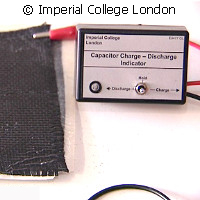EU backs revolutionary multi-purpose car material
Over the next three years, an EU-funded team of scientists will develop a new composite material that could see a car's body parts double up as its own power source. The team also believes the material has the potential to be used in everyday products such as mobile phones and laptops. The STORAGE ('Composite structural power storage for hybrid vehicles') project has been funded EUR 3.37 million under the 'Transport' Theme of the EU's Seventh Framework Programme (FP7). The UK's Imperial College London is collaborating with teams from Belgium, Germany, Greece, Sweden and the UK to produce a prototype material that could be used in future hybrid electric vehicles to store and discharge electric energy. The material is also resilient, strong and lightweight, making it well suited to the manufacture of car parts themselves. When these purposes are combined, the composite material, which consists of carbon fibres and a polymer resin, could make cars of the future more energy efficient, more compact and altogether lighter, providing further travel time between recharge intervals. As the project got underway, Imperial College London's Dr Emile Greenhalgh said the team is very excited about the potential of this new technology. 'We think the car of the future could be drawing power from its roof, its bonnet or even the door, thanks to our new composite material. Even the Sat Nav [satellite navigation] could be powered by its own casing.' Under STORAGE, the team will develop the material to replace the current metal flooring that houses the spare wheel (known as the wheel well). According to the scientists, replacing the wheel well in this way could reduce a car's overall weight by 15%, and significantly improve the driving range of a future hybrid car. The Swedish carmaker and project partner Volvo is also exploring the possibility of fitting the component into its prototype cars for testing. The researchers say that the composite material they are developing will be able to store and discharge large amounts of energy, and could simply be recharged by plugging a hybrid car into the driver's home power supply. They also believe that the material could even be used in the future for casing of products like mobile phones and computers. By making cumbersome batteries redundant, it has the potential to make everyday devices smaller and easier to transport. Dr Greenhalgh explained: 'You might have a mobile phone that is as thin as a credit card because it no longer needs a bulky battery or a laptop that can draw energy from its casing so it can run for a longer time without recharging.' 'We're at the first stage of this project and there is a long way to go, but we think our composite material shows real promise,' he added.
Countries
Belgium, Germany, Greece, Sweden



